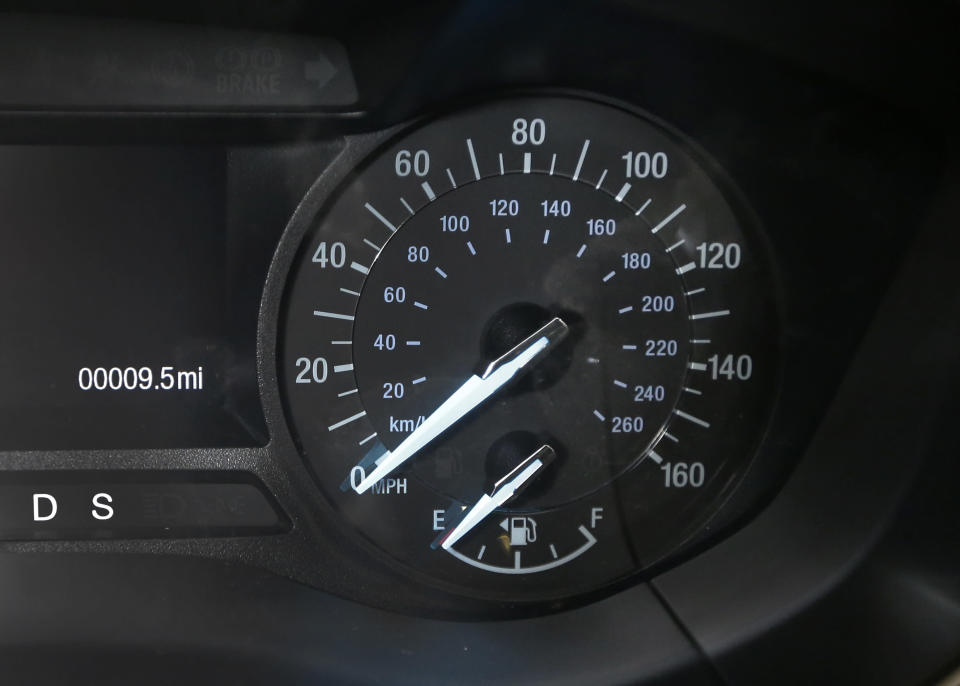Speedometer top speed often exceeds reality
More flash than dash: Speedometers often show far higher top speeds than cars can travel
DETROIT (AP) -- The speedometer on the Toyota Yaris says the tiny car can go 140 miles per hour.
In reality, the bulbous subcompact's 106-horsepower engine and automatic transmission can't push it any faster than 109.
So why do the Yaris — and most other cars sold in the U.S. — have speedometers that show top speeds they can't possibly reach?
The answer has deep roots in an American culture that loves the rush of driving fast. The automakers' marketing departments are happy to give people the illusion that their family car can travel at speeds rivaling a NASCAR racer. And companies often use one speedometer type in various models across the world, saving them money.
But critics say the ever-higher numbers are misleading. Some warn they create a safety concern, daring drivers to push past freeway speed limits that are 65 to 75 mph in most states.
"You reach a point where it becomes ridiculous," says Larry Dominique, a former Nissan product chief who now is executive vice president of the TrueCar.com auto pricing website. "Eighty percent plus of the cars on the road are not designed for and will not go over 110 mph."
Last year, speedometer top speeds for new versions of the mainstream Ford Fusion and Chevrolet Malibu were increased from 120 or 140 mph to 160, which approaches speeds on some NASCAR tracks. The speedometer on the Honda Accord already topped out at 160. All are midsize family haulers, the most popular segment of the U.S. auto market, and like most new cars, have top speeds that seldom exceed 120 mph.
The Yaris got its 140 mph speedometer in a redesign for the 2012 model year, giving it the same top reading as the original 1953 Chevrolet Corvette sports car. Even the new Nissan Sentra compact has a 160 mph speedometer.
There are several explanations for the speedometers.
When people are comparison shopping, cars with higher speedometer readings appear to be sportier, and buyers favor them even though they have no intention of driving over 100. "People really want to see higher numbers," said Fawaz Baltaji, a business development manager for Yazaki North America, a large supplier of speedometers for auto companies. "It is indicative of a more powerful engine. There's a marketing pitch to it."
Although cars with high-horsepower engines can come close to the top speedometer speeds, most are limited by engine control computers. That's because the tires can overheat and fail at higher speeds. Tires now common on mainstream cars often can't go above 130 mph or they could fail. Many tires, especially on older models, have speed limits as low as 112. But that's still faster than most people will ever drive.
Automakers, in a push to cut costs, now sell the same cars worldwide and use the same speedometers in different cars all over the world. In China and Europe, governments require that the top number on speedometers be higher than a car's top speed. Cars sold in Europe, for instance, have faster top speeds than those sold elsewhere because they can be driven over 150 mph on sections of Germany's Autobahn. So to sell the same car or speedometer globally, the numbers have to be higher, said Kurt Tesnow, who's in charge of speedometer and instrument clusters for General Motors.
Also, some mainstream cars have some souped-up cousins that go faster and need higher speedometer numbers. A Chevy Malibu with a 2-liter turbocharged engine, for instance, can go 155 mph, far higher than the mainstream version. The little Toyota Yaris gets its speedometer from another Toyota model that's sold in other countries. "It's not that each speedometer is designed for that specific vehicle," said Greg Thome, a company spokesman.

 Yahoo Autos
Yahoo Autos 

